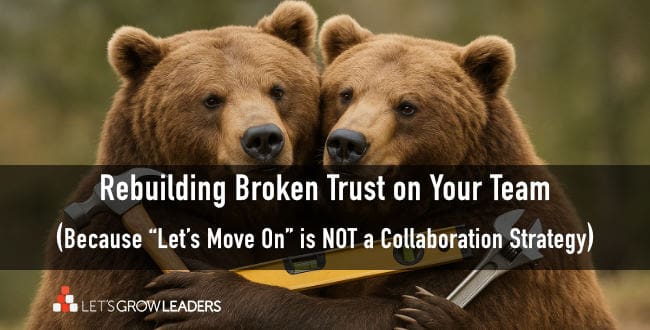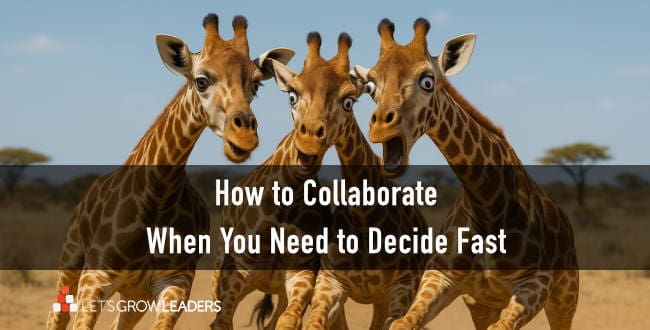Senior leaders serious about changing business culture do three things consistently.
Think about the business culture you’ve always wanted for your organization—the energy, the purpose, the unwavering alignment toward a common vision. Now, think about how much easier it would be if every team member, from the executive team to the front lines, shared that same drive and commitment. Imagine a workplace where people aren’t just showing up for a job. They fully invest in a shared purpose that pushes your organization forward every day.
This kind of culture doesn’t happen by accident. It requires intentional, visible leadership and a clear, consistent message that speaks louder than words. There are three critical steps senior leaders must take to make this vision a reality:
Lasting Business Culture Change Starts with Senior Leaders
Our favorite definition of culture comes from marketing guru Seth Godin. Culture is simply “People like us, do things like this.”
But one of the major culture challenges organizations face is that senior leaders might know what activities and habits matter most. But those same leaders struggle to communicate that knowledge and transfer behaviors throughout the organization.
True culture change requires your deliberate action, consistent messaging, and intentional reinforcement at every level. As a senior leader, your commitment to modeling, communicating, and reinforcing the culture sets the tone for lasting change.
1. Visibly Model
What you do matters way more than what you say.
Every decision you make, every action you take, tells your people what’s truly important in the organization. To drive culture change, you must align your actions with the business culture you want to create.
And it’s not just how you act when you’re with your peers. Or how you reason through a decision.
How can the entire organization visibly see you act out the culture you want?
What you do matters way more than what you say.
Here’s a quick gut check: If a new employee, with no training or handbook, watched a film of all your activities for a couple of weeks, how would they describe your culture?
Here are three examples of how you might align your visible actions with your business culture:
Decision-Making Transparency: Making a sound decision isn’t enough to change culture. Everyone needs to understand the reasons for the decision. Be clear about why you make the decisions you do. Explain not only the “what” but the “why” behind strategic choices. This transparency shows your team the values that guide decision-making. And it will help them make similar decisions in the future.
Prioritizing People in Meetings and Conversations: If you want a culture where people feel valued and heard, demonstrate this by giving people your full attention. Put away your phone. Show them that every voice matters by actively listening and encouraging contributions.
Living the Company Values: Identify three behaviors tied to your organization’s core values and commit to visibly demonstrate them each week. For example, if “innovation” is a core value, consider how you can visibly invite new ideas, tolerate a reasonable level of risk in pursuit of innovation, and respond with regard—even when you can’t use an idea.
When your team sees you model the change, they’ll begin to believe in its importance. A cultural shift won’t happen until everyone can see it—and that starts with you.
2. Comprehensively Communicate
Once you’re visibly modeling the desired business culture, the next step is to communicate throughout the organization. This is where a 5 x 5 communication plan is essential. How will you and your managers communicate at least five times, through five different channels?
Your communication strategy should build a culture where everyone:
- Understands the ‘why’ behind the change
- Clearly sees how it relates to their role.
The more you communicate—and the more you empower others to communicate—the more natural the change will feel.
Here are questions to consider as you build your communication strategy:
- How will you connect what you are asking to why it matters – in a way that makes sense to every person in every role?
- How will you ensure that your teams communicate the new business culture habits with fidelity? (How will they cascade communication? And how can you ensure they know how?)
- What are one or two strategic stories you can include in your communication to bring the habits to life? (For example: share a time you struggled with the tension between two values and how you made your decision.)
- How else might you get creative and have fun with communicating your culture, values, and relevant habits? (Check out this list of 101 ways to communicate–even with hybrid and remote teams.)
- How can you engage everyone in the organization to make the culture their own? To ask questions and explore or challenge areas that don’t make sense to them?
3. Intentionally Amplify with Celebration and Accountability
Everyone can see you and your team model the culture. You’ve clearly communicated and engaged everyone to understand what the change looks like in every role.
Now it’s time to build momentum with celebration and accountability.
Celebration and accountability are two sides of the same coin. They both close the loop of an intention. You set out to do something.
When you succeed, celebrate!
When you don’t, follow through with accountability: what can you learn for next time? What needs to change? Is there a way to renew the commitment and follow through now?
Celebration and accountability amplify your business culture. They tell everyone what matters. So don’t leave them to chance. Plan your celebration and accountability strategy from the start.
Celebrate Early Wins and Small Steps
As soon as you see behaviors that reflect the new culture, acknowledge them. Whether it’s a team reaching a milestone or an individual embodying the values, celebrate the moment. Tell these stories. Highlighting these achievements reminds everyone that the change isn’t just words on a wall. Change is real and happening.
Set Clear Expectations for Accountability
Hold yourself and other leaders accountable for embodying the culture. Equip everyone to give feedback—even junior employees should feel empowered to respectfully hold senior leaders accountable. This shows that the new culture applies to everyone, regardless of role.
Continual Reflection and Adjustment
Culture change isn’t a one-time project; it’s an ongoing commitment. Regularly evaluate the progress and adjust as needed. Have a quarterly or semi-annual culture review where you discuss what’s working, what needs adjustment, and what new behaviors need reinforcement.
Celebration and accountability go hand in hand. When you make a big deal out of the behaviors you want to see and create space for accountability, you’re building a self-sustaining culture where people take pride in maintaining the values and behaviors you’ve established.
Want a Blueprint for Your Culture Change?
Sustained business culture change requires intentional effort.
One of our favorite things is to work with senior teams to build your leadership blueprint. Together, you’ll identify the specific habits that will help you model, communicate, and amplify your culture and achieve breakthrough results.








0 Comments